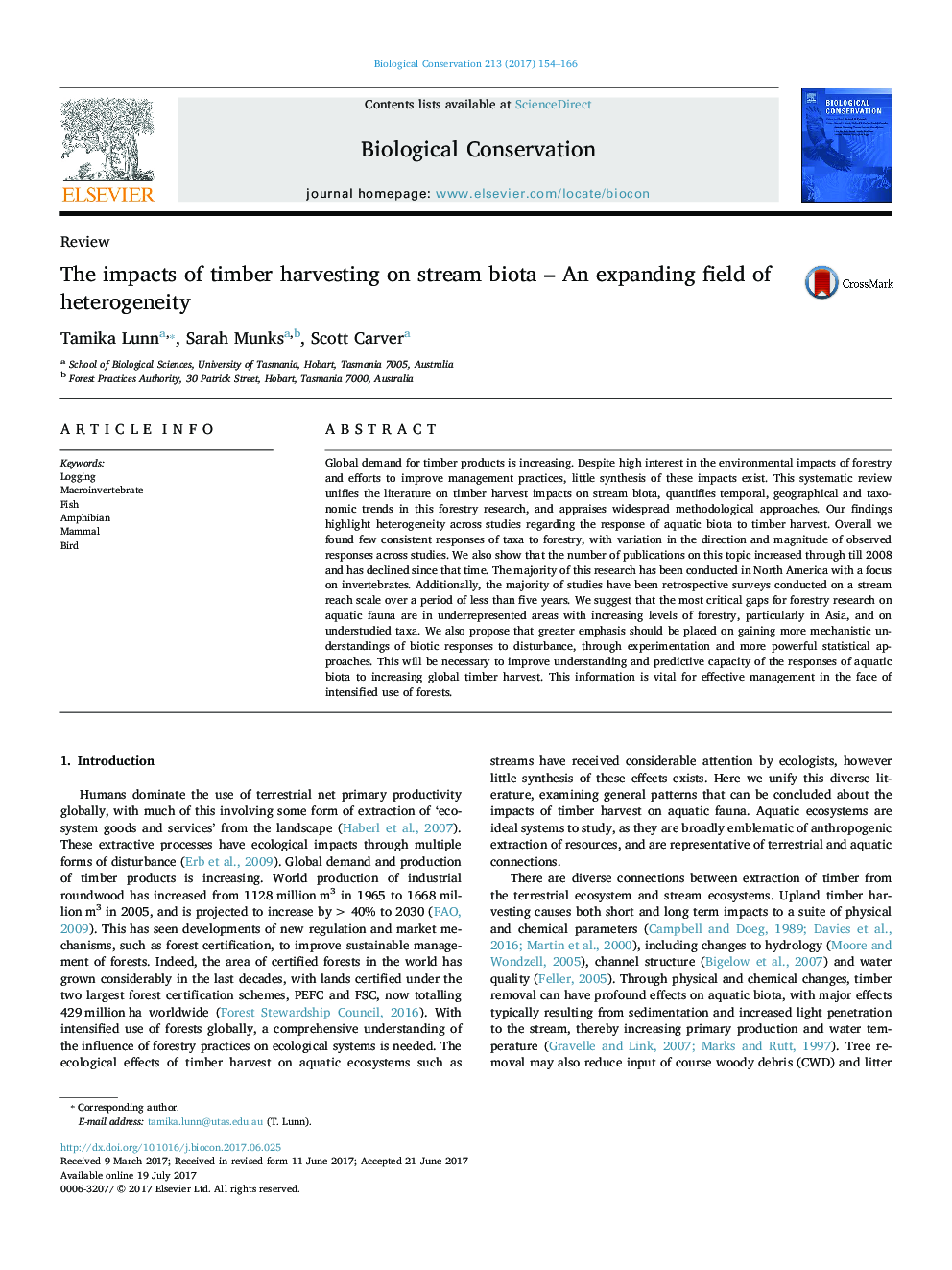| Article ID | Journal | Published Year | Pages | File Type |
|---|---|---|---|---|
| 5742975 | Biological Conservation | 2017 | 13 Pages |
â¢Studies show little consensus regarding responses of aquatic biota to harvest.â¢Mechanistic understandings of impacts are needed in complex stream environments.â¢Critical gaps for aquatic faunal forestry research include studies in Asia.â¢Larger spatial and temporal scale monitoring of biotic change is needed.â¢More research on semi-aquatic mammals is warranted.
Global demand for timber products is increasing. Despite high interest in the environmental impacts of forestry and efforts to improve management practices, little synthesis of these impacts exist. This systematic review unifies the literature on timber harvest impacts on stream biota, quantifies temporal, geographical and taxonomic trends in this forestry research, and appraises widespread methodological approaches. Our findings highlight heterogeneity across studies regarding the response of aquatic biota to timber harvest. Overall we found few consistent responses of taxa to forestry, with variation in the direction and magnitude of observed responses across studies. We also show that the number of publications on this topic increased through till 2008 and has declined since that time. The majority of this research has been conducted in North America with a focus on invertebrates. Additionally, the majority of studies have been retrospective surveys conducted on a stream reach scale over a period of less than five years. We suggest that the most critical gaps for forestry research on aquatic fauna are in underrepresented areas with increasing levels of forestry, particularly in Asia, and on understudied taxa. We also propose that greater emphasis should be placed on gaining more mechanistic understandings of biotic responses to disturbance, through experimentation and more powerful statistical approaches. This will be necessary to improve understanding and predictive capacity of the responses of aquatic biota to increasing global timber harvest. This information is vital for effective management in the face of intensified use of forests.
